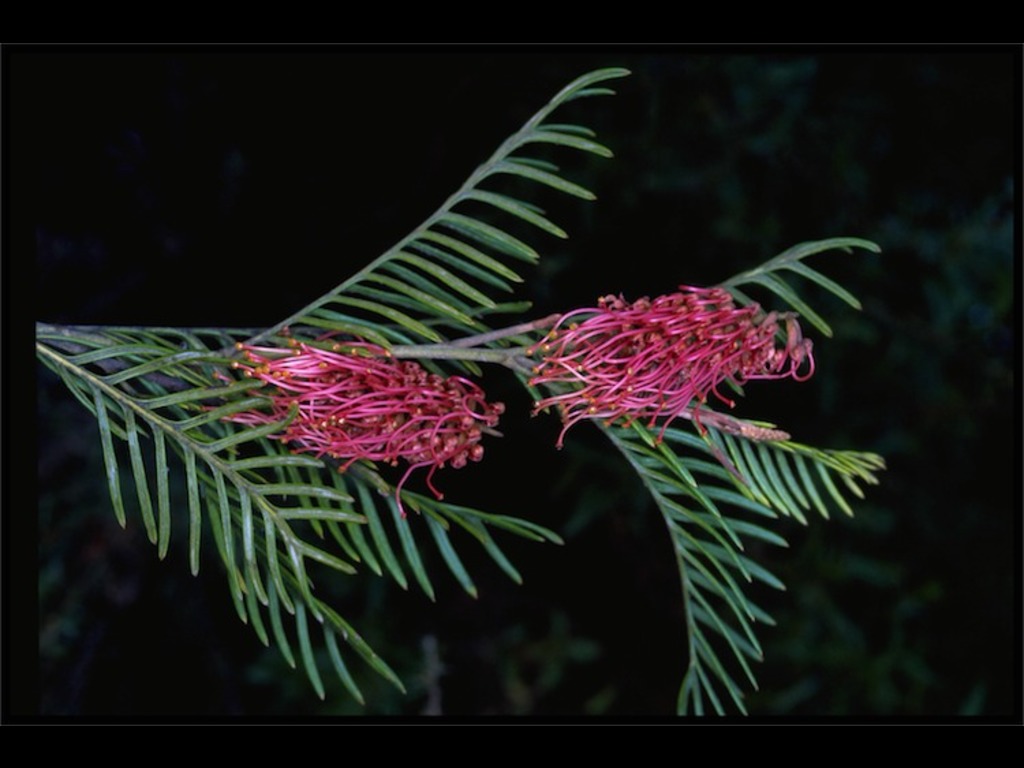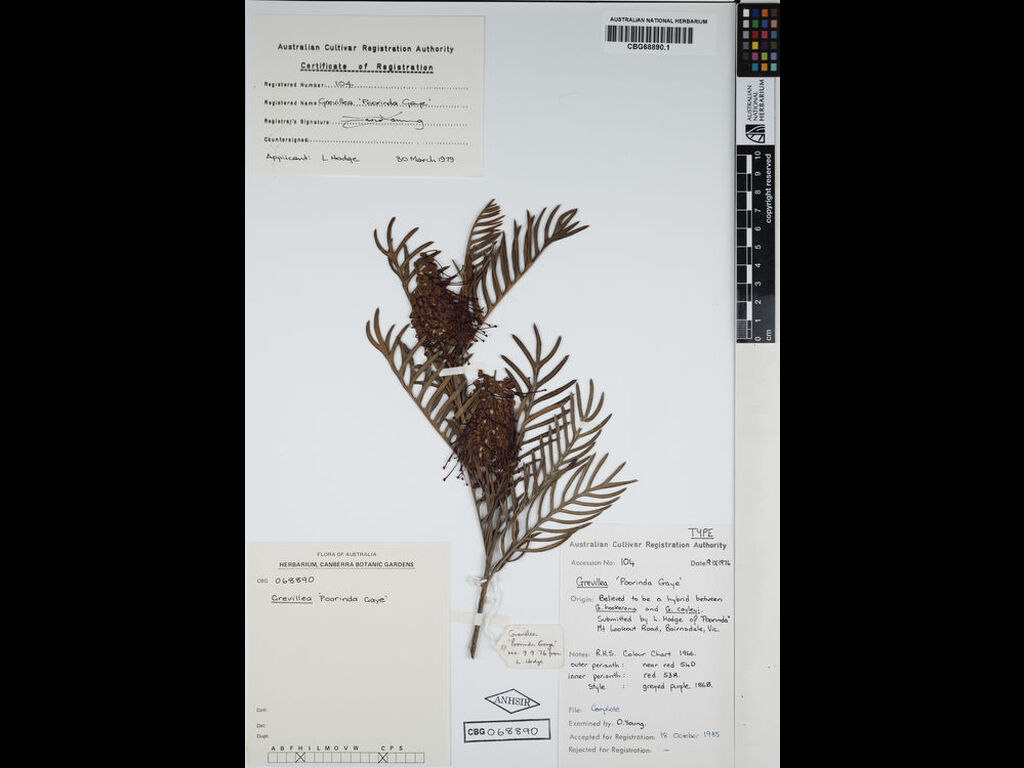Grevillea 'Poorinda Gaye'
- File Number
- 104
- ACRA Field Book Number
- 70
- Registration Date
- 17/10/1984
- Application Received
- 09/09/1976
- Family
- Proteaceae
- Cultivar Name
- Grevillea 'Poorinda Gaye'
- Origin
- Grevillea 'Poorinda Gaye' is said to be a hybrid between a plant erroneously known in the trade as G. hookeriana and G. caleyi. Cultivar first received by the Authority on the 9th September 1976. Applicant is Mr. Leo Hodge, "Poorinda", Mt. Lookout Road, Bairnsdale, Victoria.
- Characteristics
- It forms a tall, spreading shrub, growing to ca. 2m tall by ca. 3m wide. The branchlets are covered with a dense mat of appressed, brownish hairs. This cultivar has deeply lobed leaves ca. 95mm long by 35mm wide at the widest point. Each lobe is ca. 2mm wide dissected to the midrib of the leaf and tipped with a fine point. The upper surfaces of the leaf are dark green and glabrous, whilst the undersides are covered with dense, silky hairs. The veins on the upper surface are not raised but are conspicuous because of their yellow green colour. The veins on the underside, midrib and lobes are raised and very conspicuous. The margins of the leaf are rolled under.The inflorescences are axillary and of the "toothbrush" type. The perianth segments are brownish and ca. 25mm long. The style is ca. 25mm long and purplish in colour. Diagnosis: Grevillea 'Poorinda Gaye' is said to be a hybrid with one of the parents being the plant erroneously known as G.hookeriana. This plant, whilst called G. hookeriana, looks very different, the main differences being that the flowers are much larger and the leaves much shorter but far more divided. This diagnosis is prepared under this assumption. Specimens cited under the heading "Comparative Specimens" are called G. hookeriana sens. lat. at the Herbarium of the Australian National Botanic Gardens. This name will be used to define this plant form for this description. The cultivar has leaves very similiar to G. hookeriana sens. lat. While the new growth on G. caleyi is very hairy on both the stems and leaves the cuiltivar is nearly glabrous above with only a very light covering of hair, mainly along the midveins. The leaves of G. hookeriana sens. lat. are glabrous above.The cultivar's leaves have a very short but dense tomentum below. The inflorescences are of much the same size and qaulity as those found on both parents. The cultivar has the same prominent midveins of G. hookeriana sens. lat. The cultivar closely resembles G. hookeriana sens. lat. and differs only in minor differences noted above.
- Cultivation
- Suitable for most soil types. Best in a sunny site but will tolerate some shade. Frost resistant to -6C. Responds well to pruning.
- Publication
- Wrigley, J.W. & Fagg, M. (1989), Banksias, Waratahs & Grevilleas and all other plants in the Australian Proteaceae family: 305
- Colour Coding
- R.H.S. Colour Chart 1966.Outer perianth - near red 54D.Inner perianth - red 53A.Style - Greyed purple 186B.
- Propagation
- Cuttings from semi-firm new growth
- Applicant Name
- Mr L Hodge.
- Uses
- As part of a mass planting or mixed in a shrubbery, or as a feature plant. Attracts nectar feeding birds.
- Availability
- Unknown
- ANBG Accession Numbers
- ACC104, ACRA70, CBG7811621
- NSL ID
- -

